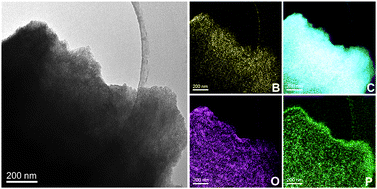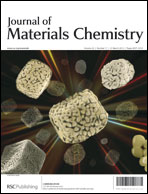The diverse applications of ordered mesoporous carbons (OMCs) are not only bonded to their superior structural properties, but also to their chemical properties. The termination of graphene sheets in OMCs provides abundant sites for heteroatom decoration to mediate their chemical properties. In this contribution, boron and phosphorus were co-incorporated into OMCs via a facile aqueous self-assembly taking advantage of a hydrothermal doping strategy. The as-obtained B/P-modified OMCs process a large surface area of ca. 600 m2 g−1, and a uniform pore size of ca. 6.3 nm, as well as long range ordering. By varying the hydrothermal synthesis temperature, the concentration of B and P introduced can be controlled from 0.8 to 1.6 wt% and from 2.3 to 3.6 wt%, respectively. The interaction of heteroatom B and P was enhanced when the hydrothermal temperature is above 100 °C. The heteroatom-containing groups were firmly embedded and homogeneously distributed on the carbon frameworks. When the B/P co-modified OMCs were applied as electrodes in supercapacitors, they presented promising performance compared with B- or/and P-modified OMC obtained without hydrothermal treatment.

You have access to this article
 Please wait while we load your content...
Something went wrong. Try again?
Please wait while we load your content...
Something went wrong. Try again?


 Please wait while we load your content...
Please wait while we load your content...